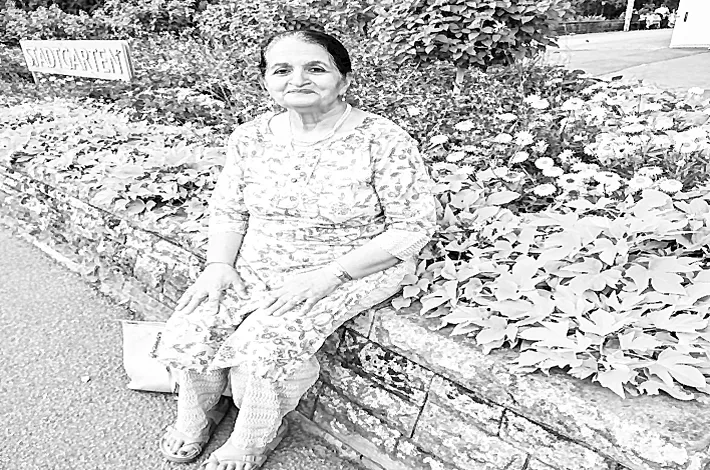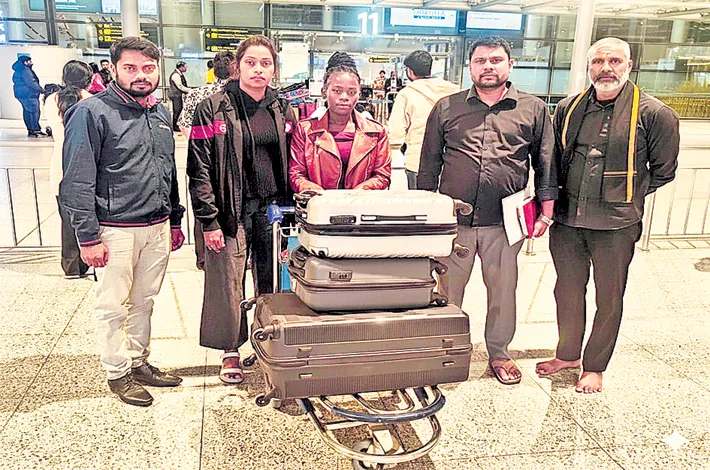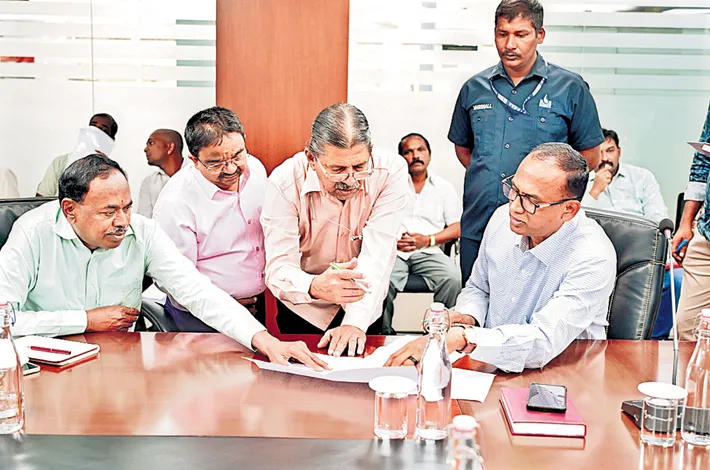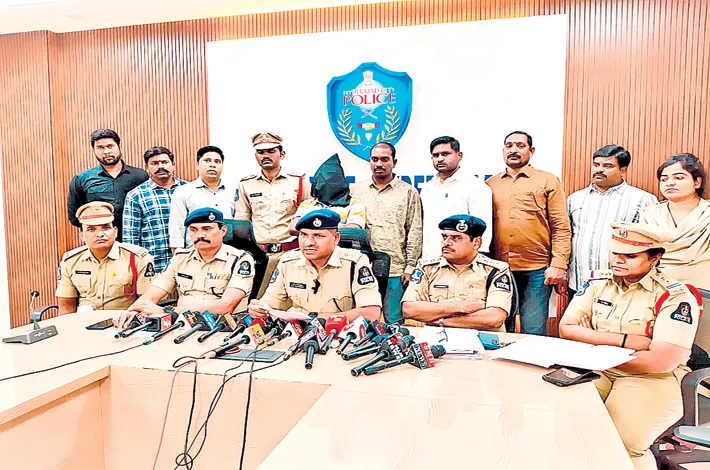Yet another massacre in the killing fields of Pahalgam
24-04-2025 12:00:00 AM

Indian security establishment should have read between the lines and realised that Munir gave a clear signal of an imminent attack
The repeated assurances given by Home Minister Amit Shah that normality had returned to Kashmir seemed to have been blown aside when a group of terrorists gunned down a large number of tourists in the meadows of Baisaran, located seven kms from Pahalgam, leaving 28 dead and several questions unanswered.
Pahalgam remains the base for the army because it is from here that the arduous climb up the Zojila Pass starts before the troops, ammunition and goods can be distributed to different parts of Ladakh. The army was known to have posted a small contingent of troops above the Baisaran meadow, who kept an eye on terrorist movement through these forests.
Obviously these and other security forces were removed, pointing to a grave security breach, given the sensitivity of the region and the fact that this tourist population remained unprotected in the likelihood of an attack. Pahalgam has been a regular hunting ground for terrorists. Way back in 2000, 30 persons were killed and 60 injured, followed by another attack two years later, leaving eleven dead. In 2017, eight pilgrims returning from Amarnath were killed, while just last year, a tourist couple was injured in a case of firing in this area.
The security apparatus in the UT were taken completely unawares, and once the killings had taken place, it was left to local shopkeepers and pony owners to ferry the injured and bleeding to Pahalgam, from where they were taken to nearby hospitals. The Home Minister rushed to Srinagar, where he held several security meetings, apart from personally visiting the site, but what is shocking is that apart from senior security officials of the army, J&K police and the BSF, both Chief Minister Omar Abdullah and Lt Governor Manoj Sinha did not accompany him to Baisaran. Nor anyone from the political class was present when he went to pay homage to those killed yesterday.
Senior intelligence officers believe the centre blundered by bringing Nalin Prabhat, the 1992-batch IPS officer of Andhra Pradesh cadre, and appointing him as DGP J&K in October last year. Prabhat had shot into the limelight for his counter-insurgency operations as head of Greyhounds, an elite anti-Naxal unit in Andhra Pradesh, but had little experience of handling insurgency in J&K.
This goof-up was followed by yet another when the Lt Governor decided to unilaterally transfer 48 J&K Administrative Service (JKAS) officers earlier this year. According to National Conference sources, the elected government feels that the order showed disrespect to the people’s mandate in the Valley since they had voted overwhelmingly in favour of the National Conference, and it also served to belittle the authority of the Omar Abdullah government.
After the revocation of Article 370, the BJP government has gone out of its way to show the public that they have full and exclusive control over law and order in J&K. Abdullah was slighted once again when he was kept out of a high-level security meeting called by Amit Shah in Srinagar on April 8 to review the preparedness of security forces and intelligence agencies in the state. Even on Feb 12, the CM was snubbed by Sinha, who held a security review meeting at the police control room in Srinagar.
The recent transfer of J&K officials is a continuation of the feeling of alienation that the local bureaucrats feel towards the centre. It is a well-known aphorism that terrorists cannot operate without local support. Even in this attack, where up to six militants were involved, two are said to be “local boys”.
Dr Ajay Sahni, executive director of the Institute of Conflict Management, believes in the past there had been a tacit understanding between the militants and the local population that a non-religious industry such as tourism, on which practically every family in the Valley is dependent, would not be targeted. “This rule has been breached,” said Sahni. But there are other serious issues at stake.
As of now, the army is short of, specifically, 92,410 junior commissioned officers and non-commissioned officers, representing a 7.72 per cent shortfall. Despite a recent disengagement agreement with China, over 50,000 troops remain deployed along the LAC in eastern Ladakh, where the army has had to maintain its presence for the past five years.
This resulted in the weakening of the Jammu division grid, as troops from there had to be moved to eastern Ladakh. Since 2019, the Jammu division has witnessed a sharp acceleration in terrorist activity. The Jan 2023 attack, where seven civilians were killed in Dangri village, and the June 2024 assault on a pilgrim bus in Reasi, are just two instances of the Pakistani deep state seizing the opportunity opened up by the reduction of troops, both in the army and the paramilitary.
In order to neutralise terror networks, the inhabitants of this mountainous and densely forested terrain are invariably the first line of defence. It was, therefore, imperative for the Modi government to ensure that the Muslim populace in J&K was not alienated from mainland India. The Modi government seems hellbent on doing the opposite.
The granting of the Scheduled Tribe status in early 2024 to the Pahadi Muslims ended up alienating the Gujjar community, who have served as the eyes and ears of the security forces since 1947. The government’s decision to dismantle the Village Defence Committees, who were trained in self-defence and, being armed, could take on these militants, is another blunder.
Many of these VDCs were located in remote areas where the army’s reach was limited. Equally disturbing was the centre’s decision to stop the recruitment of special police officers, an important source of information for the security forces. Of course, a great deal is being made out of Pakistani chief of army staff General Amir Munir’s recent speech in which he referred to Kashmir as being their `jugular vein’. The speech was obviously triggered by the Pakistani army being unable to control secessionists of the Baloch Liberation Front or the Afghanistan-based Tehrik-i-Taliban, which hopes to overthrow the Pakistani govt and establish an emirate based on Islamic laws.
The Indian security establishment should have read between the lines and realised that Munir was giving a clear signal that an attack was imminent. The presence of the US vice-president, JD Vance, was a good time for the militants to attack, as it would turn the international eye on how bloodletting had not stopped in the Valley. This was a repeat of the Chittisinghpora massacre, in which 36 Sikhs were felled on March 21, 2000, on the eve of President Clinton’s visit to the subcontinent.
There is no doubt that there has been a dramatic spike in infiltration and attacks on civilians and security forces along the Line of Control. The Pakistanis want to show the world that violence in the Valley has not abated, and the attack on innocent tourists seems to be a prelude to the worse that is to follow. What kind of calibrated response the Indian security forces will give to this massacre needs to be seen.








